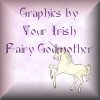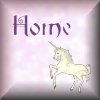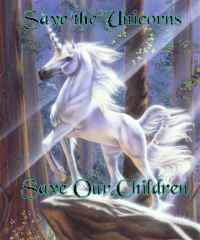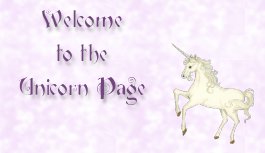 !
!
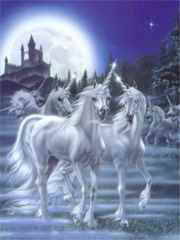
These marvelous beasts have been spoken of since the fourth century BC. In Greece, in the age of Pericles, one physician named Ctesias wrote of the tales of travelers and reports of the Persian officials as to what was what. He included this information and observations of the unicorn:
"There are in India certain wild asses which are as large as horses, and larger. Their bodies are white, their heads dark red, and their eyes dark blue. They have a horn on the forehead which is about a foot and a half long. The dust filed from this horn is administered in a potion as a protection against deadly drugs. The base of this horn, for some two hands'-breadth above the brow, is pure white; the upper part is sharp and of a vivid crimson; and the remainder, or middle portion, is black. Those who drink out of these horns, made into drinking vessels, are not subject, they say, to convulsions or to the holy disease. (epilepsy) Indeed, they are immune even to poisons, if either before or after swallowing such, they drink wine, water, or anything else from these beakers. Other asses, both the tame and the wild, and in fact all animals with solid hoofs, are without the ankle bone and have no gall in the liver, but these have both the ankle bone and the gall. This ankle bone, the most beautiful I have ever seen, is like that of an ox in general appearance and in size, but it is as heavy as lead and its color is that of cinnabar through and through. The animal is exceedingly swift and powerful so that no creature, neither the horse nor any other, can overtake it."
Aristotle briefly mentioned it, as well, showing he did not discount its existence, saying, "We have never seen an animal with a solid hoof and with two horns, and there are only a few that have a solid hoof and one horn, as the Indian ass and the oryx. Of all animals with a solid hoof, the Indian ass alone has a talus."
We have mention of the unicorn from Aelian in which he says: "I have found that wild asses as large as horses are to be seen in India. The body of this animal is white, except on the head, which is red, while the eyes are azure. It has a horn on the brow, about one cubit and a half in length, which is white at the base, crimson at the top, and black between. These variegated horns, I learn, are used as drinking cups by the Indians--although not, to be sure, by all of the people. Only the great men use them, after having them ringed about with hoops of gold exactly as they would put bracelets on some beautiful statue. And it is said that whosoever drinks from this kind of horn is safe from all incurable diseases such as convulsions and the so called holy disease, and that he cannot be killed by poison."
He later wrote the following:
"They say that there are mountains in the interior regions of India which are inaccessible to men and therefore full of wild beasts. Among these is the unicorn, which they call the cartazon. This animal is as large as a full grown horse, and it has a mane, tawny hair, feet like those of the elephant, and the tail of a goat. It is exceedingly swift of foot. Between its brows there stands a single black horn, not smooth but with certain natural rings and tapering to a very sharp point. Of all animals, this one has the most dissonant voice. With beasts of other species that approach it the 'cartazon' is gentle, but it fights with those of its own kind, and not only do the males fight naturally among themselves, but they contend even against the females and push the contest to the death. The animal has great strength of body, and it is armed besides with an unconquerable horn. It seeks out the most deserted places and wanders there alone. In the season of rut it grows gentle towards the chosen female and they pasture side by side, but when this time is over he becomes wild again and wanders alone. They say that the young ones are sometimes taken to the king to be exhibited in contests on days of festival, because of their strength, but no one remembers the capture of a single specimen of mature age."
Pliny the elder, not exactly a romantic writer, describes the unicorn in the following manner: "The Orsaean Indians hunt an exceedingly wild beast called the monoceros, which has a stag's head, elephant's feet, and a boar's tail, the rest of its body being like that of a horse. It makes a deep lowing noise, and one black horn two cubits long projects from the middle of its forehead. This animal, they say, cannot be taken alive."
Interesting, isn't it, that that horn is growing with the telling.
Julius Solinus described this animal, and his words are translated by Arthur Golding: "But the cruellest (sic) is the Unicorne, a Monster that belloweth horriblie, bodyed like a horse, footed like an Eliphant, tayled like a Swyne, and headed like a Stagge. His horne sticketh out of the midds of hys forehead, of a wonderful brightness about foure foote long, so sharp, that whatsoever he pusheth at, he striketh it through easily. He is never caught alive; kylled he may be, but taken he cannot bee." from The Excellent and pleasant works of Julius Solinus Polyhistor, 1587.
Julius Ceasar is said to have made mention of the fact that the unicorn dwelled in the Hercrnian Forest.
I understand that the King James version of the Bible lists 7 different references to the unicorn. I take this on faith, as I don't have this version, myself: Numbers 23:22; Deut. 33:17; Psalm 22:21; Psalm 29:6; Psalm 92:10; Isaiah 34:7; and Job 39:9-12. A whole book in and of itself can be written on this...knock yourself out.
There is an often quoted book of that time called the Bestiary. (Originally thought to have been written by Physiologus alone, it is also referred to as Physiologus, as in "Physiologus says...") Now, this was written at a time when it was widely believed that animals, and everything else, had a moral lesson to impart to humans, merely through its existence. Since every animal had moral values assigned to it, the unicorn was no exception.
As to its capture, it is said the trick to capturing one is to lead a virgin to a place frequented by the unicorn and leave her there. He will approach her and lay his head in her lap, after which the hunters may capture him. Later, it was said if the woman was not truly a virgin, she would be killed by the unicorn. I guess this was the best virginity test they could come up with then...While the unicorn was evil, as taught by the church, this was proof positive that good would overcome evil. The secular books call the unicorn gentle, but not able to be captured unless the above trick was played. The unicorn was drawn to the scent of the virgin, implying what? She wore a lot of perfume? Wonder what kind? I'd like to get me some!
There was a medieval belief that said the attraction was due to eye contact, and that unicorns were more attracted to many maidens than just one, preferring to watch from a crouching position, observing all the feminine goings on by the water, and falls in love with them. While gazing at them, his heart is given up to them, and the hunters can then have their way.
Not very sportsman like, is it?
The horn of the unicorn is said to have extremely powerful effects on whatever it touches. Naturally, been run through by it would have some extreme effect. Unicorns are frequently depicted near water, so if a passing serpent has left his venom floating on the surface, all animals wait for the unicorn to come, and when the horn touches the surface, all the water becomes safe to drink. Lovely vignette, no?
From: The Lore of the Unicorn, by Odell Shepard

Sign My
Guestbook ![]() View My
Guestbook
View My
Guestbook
